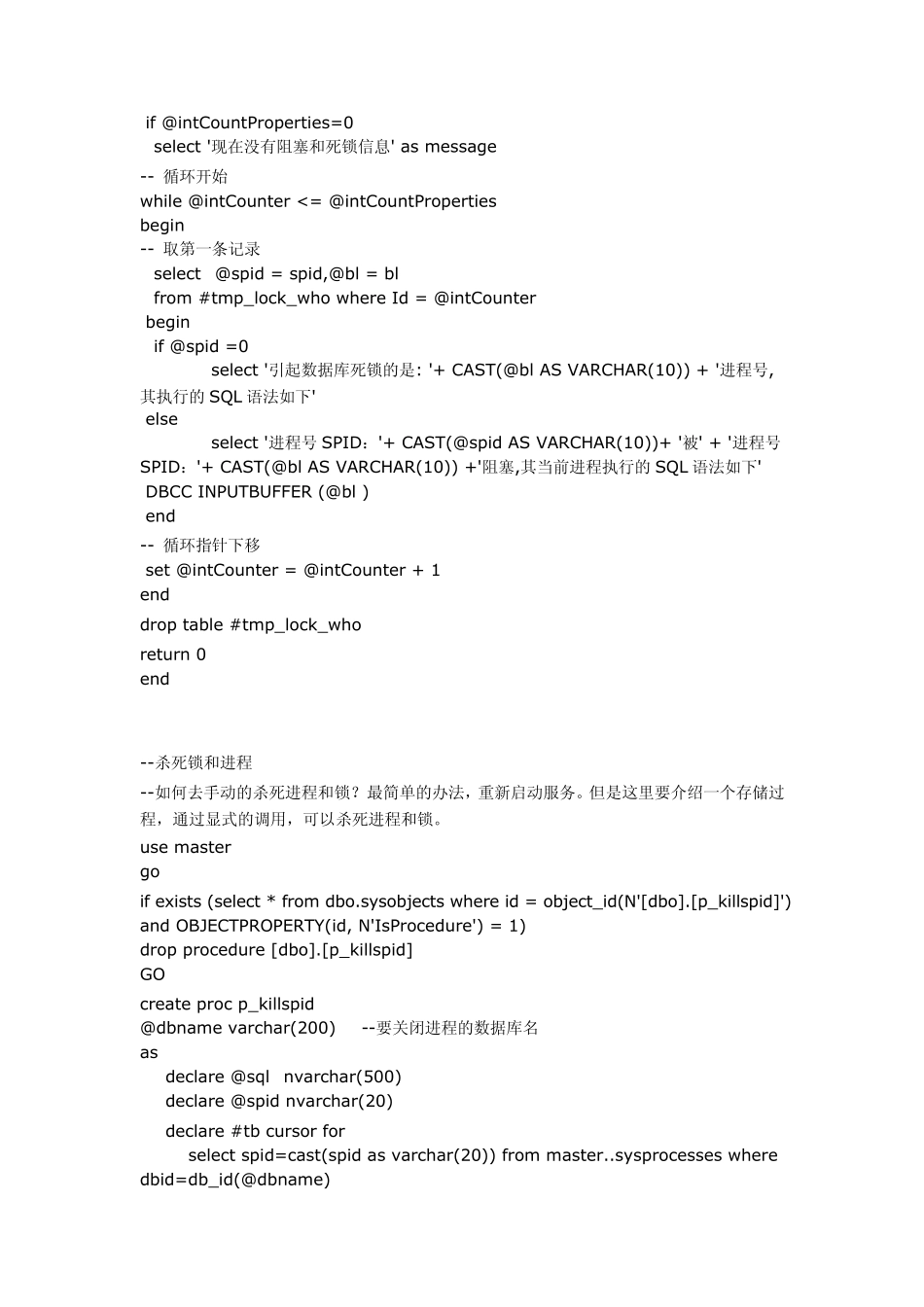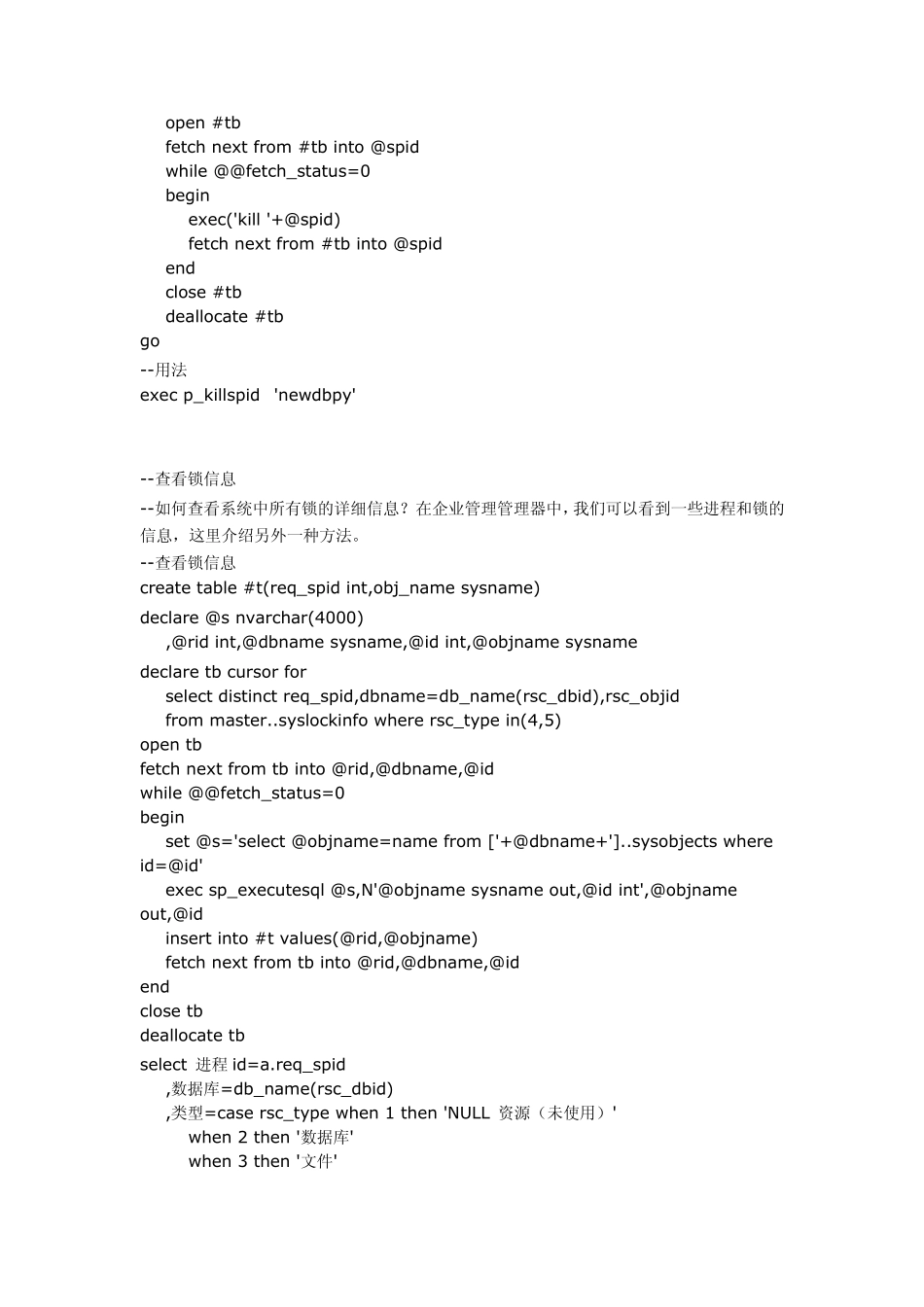【转】处理sql server 的死锁 --第一篇 --检测死锁 --如果发生死锁了,我们怎么去检测具体发生死锁的是哪条SQL 语句或存储过程? --这时我们可以使用以下存储过程来检测,就可以查出引起死锁的进程和SQL 语句。SQL Server自带的系统存储过程sp_who和sp_lock也可以用来查找阻塞和死锁, 但没有这里介绍的方法好用。 use master go create procedure sp_who_lock as begin declare @spid int,@bl int, @intTransactionCountOnEntry int, @intRowcount int, @intCountProperties int, @intCounter int create table #tmp_lock_who ( id int identity(1,1), spid smallint, bl smallint) IF @@ERROR<>0 RETURN @@ERROR insert into #tmp_lock_who(spid,bl) select 0 ,blocked from (select * from sysprocesses where blocked>0 ) a where not exists(select * from (select * from sysprocesses where blocked>0 ) b where a.blocked=spid) union select spid,blocked from sysprocesses where blocked>0 IF @@ERROR<>0 RETURN @@ERROR -- 找到临时表的记录数 select @intCountProperties = Count(*),@intCounter = 1 from #tmp_lock_who IF @@ERROR<>0 RETURN @@ERROR if @intCountProperties=0 select '现在没有阻塞和死锁信息' as message -- 循环开始 while @intCounter <= @intCountProperties begin -- 取第一条记录 select @spid = spid,@bl = bl from #tmp_lock_who where Id = @intCounter begin if @spid =0 select '引起数据库死锁的是: '+ CAST(@bl AS VARCHAR(10)) + '进程号,其执行的SQL 语法如下' else select '进程号SPID:'+ CAST(@spid AS VARCHAR(10))+ '被' + '进程号SPID:'+ CAST(@bl AS VARCHAR(10)) +'阻塞,其当前进程执行的SQL 语法如下' DBCC INPUTBUFFER (@bl ) end -- 循环指针下移 set @intCounter = @intCounter + 1 end drop table #tmp_lock_who return 0 end --杀死锁和进程 --如何去手动的杀死进程和锁?最简单的办法,重新启动服务。但是这里要介绍一个存储过程,通过显式的调用,可以杀死进程和锁。 use master go if exists (select * from dbo.sysobjects where id = object_id(N'[dbo].[p_killspid]') and...


